We Moved!
Mar 02, 2021
The new NC DNA Day Blog is now here (http://ncdnadayblog.org/). All existing and future posts (after today March 2, 2021) will be found at that address. We hope you enjoy the new website!

The new NC DNA Day Blog is now here (http://ncdnadayblog.org/). All existing and future posts (after today March 2, 2021) will be found at that address. We hope you enjoy the new website!
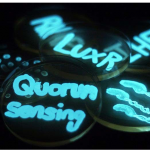
By Katie Acken Quorum sensing (Noun. /KWORE-rum SEN-sing/) What does it mean? Quorum sensing is how bacteria communicate with each other. Bacteria produce quorum sensing molecules, also called autoinducers, and secrete them into the surrounding environment. As bacteria continue to multiply, quorum sensing molecules accumulate in their surroundings. Once the quorum sensing molecules are concentrated […]
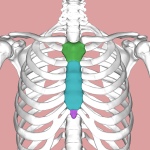
By Emma Goldberg Xiph·oid proc·ess (noun. /ZEYE-foid PRAH-sehs/) What does it mean? The sternum is divided into three segments: the manubrium, body and xiphoid process. The xyphoid process is the lowest segment of the sternum. It is small and cartilaginous, meaning it’s made out of dense connective tissue. In the picture below, it is highlighted […]
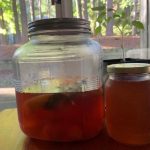
By Riya Gohil One COVID/quarantine hobby I’ve picked up over the course of the last year has been brewing kombucha. To my surprise, it’s a very simple process (for us humans). Once you start your first brew, you can brew as many brews as your heart desires. What is Kombucha? Kombucha is a fermented tea […]
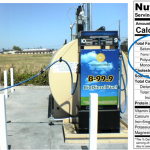
By Regina Fernandez Fun Rating: Difficulty Rating:Image from Biorender What is a lipid? Lipids are organic hydrophobic molecules that do not mix well with water. Some examples of lipids include fats, phospholipids, and cholesterol, which are found in food and in living organisms. Lipids in our body are used to produce and store energy, are […]

By Michelle Chamberlain Today, humans rely on oxygen to survive, but for the first half of our planet’s history oxygen was scarce. The Earth is approximately 4.54 billion years old and its first life-forms emerged as early as 3.77 billion years ago as single-celled microorganisms. Because these microbes evolved in an anoxic environment, they were […]
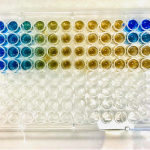
By Madison Williams Bradford Protein Assay What is the general purpose? A Bradford Protein Assay detects protein concentrations in a sample solution based on the color change of the dye used. Why do we use it? This technique is used to determine the amount of protein found in a protein sample. One reason you might […]

By Emma Goldberg Gloomy octopuses, also known as Common Sydney Octopus, have traditionally been thought of as loners. Until recently, scientists believed these ocean critters, who live on the rocky shores of Eastern Australia and Northern New Zealand, only interacted with each other to mate once per year. Soyou can imagine how surprised marine biologist […]

By Riya Gohil Nucleosome (Noun. /NEW-klee-uh-sohm/) What does it mean? A nucleosome is a unit of eight proteins (called histones) that DNA wraps around, like how thread wraps around a spool. If you stretch out the DNA inside a single human cell, DNA would be about 6 feet long! That’s a lot of DNA that […]
By Whitney Bell Malignant (adjective. /mal-IG-nant/) What does it mean? In science, the word “malignant” can be defined as cancerous. This word is often used to describe tumors whose cells are abnormal, invasive, fast-growing, and have the ability to metastasize (spread) to other parts of the body and cause life-threatening disease. How do I use […]

By Sean Gay You look up at the clock, then at your calculus teacher. After listening for what feels like hours, you look back at the clock. It has only been one minute. You feel your eyes get heavy and you slouch in your chair, only to be awakened by your teacher asking you to […]

By Mohamed Nasr Have you ever wondered what could happen if there were several exact copies of yourself? What would life be like if every biological entity had several exact copies somewhere in the world? If these copies are genetically identical, they are called clones, and the process by which these identical copies are made […]

By Devina Thiono Animals, and nature in general, have been able to withstand various conditions without much help. Each creature has adapted in such a way that they are able to function seamlessly where they live. This quality is what inspired the field of biomimicry. Biomimicry is the practice of studying organisms throughout nature and […]

By Alec Chaves Syncytium (noun. /sin-SI-she-um/) What does it mean? A syncytium is a collection of subcellular or cellular parts that work together in unison. Etymology The word syncytium is derived from Greek “syn” and “kytos.” Combined, they loosely translate to “together in a box.” How do I use it in a sentence? “The muscle […]

By Rami Major The longest gene in humans is called DMD, which facilitates the production of a protein called dystrophin. Dystrophin plays a role in strengthening both skeletal and cardiac muscle fibers. It is largely responsible for your ability to move and pump blood throughout your body. The DMD gene is considered “X-linked” because it […]
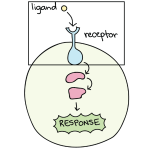
By Seth Veenbaas Ligand (noun. /LIG-uhnd/) What does it mean? In biochemistry, a ligand is a molecule that binds to or sticks on to macromolecules, which are large biological structures in our cells made of protein, DNA, or RNA. Ligands come in all shapes and sizes. Some ligands are small ions made of a single […]
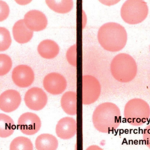
By Mariah Jones Macrocytes (noun. /MAK-row-sites/) What does it mean? A macrocyte is an unusually large red blood cell. Macrocytes area typical sign for a type of anemia, called [pernicious anemia.] A person with this type of anemia will most likely also, have a lack of vitamin B12 and/or folic acid in their system. These […]
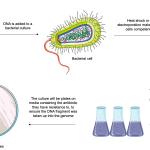
By Nicole Gadda Technique Name: Bacterial Transformation Fun Rating: Transformations get a full 5/5 fun rating from me! The possibilities are truly endless when it comes to transforming DNA into a cell. You can make any combination imaginable! Want your cells to fluoresce bright green? Want your cells to express a super cool protein you just […]
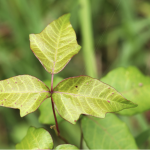
By Jenna Beam Earlier this month, I decided to embark on my first backpacking trip in Congaree National Park in South Carolina (be warned: beautiful, but mosquito central). While walking through the forest, my fellow backpacker pointed out a massive vine of poison ivy… right where I was about to step! And that’s when I […]
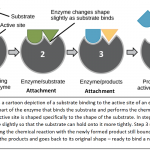
By Zoe Terwilliger Substrate (noun. /SUB-strate/) What does it mean? In biochemistry, a substrate is a molecule that an enzyme acts on. Substrates attach to enzymes and undergo an enzyme-catalyzed chemical reaction to form a new substance: the product. How do I use it in a sentence? ATPases are enzymes that all bind the substrate […]

By Priscila Santa Rosa Parthenogenesis (Noun. /par-theh-no-JEH-ne-sis/) What does it mean? Parthenogenesis is a type of asexual reproduction in animals where the egg can develop without being fertilized by a sperm. Parthenogenetic embryos have no father, which means that they have the genetic material only from the mother. Parthenogenesis is a common type of […]

By Whitney Bell Technique Name: Mammalian Cell Culture Difficulty Rating: 4/5 petri dishes depending on the day. Mammalian cell culturing can be simple if you’re using immortalized cell lines (like fast-growing cancer cells; however, can be more difficult and time consuming if you are using primary cells lines to make sure they are not differentiating […]

By Taylor Tibbs It is that time of year again: the morning air is crisp and you can feel a bit of a chill; the summer trees that were once a lush and deep green are beginning to turn into a splendor of reds, yellows, and oranges. This colorful phenomenon seems to occur every year […]

By Emma Goldberg If you’ve ever woken up in the middle of the night and tried to reach for something on your nightstand, you know that it takes your eyes a few minutes to adjust to the darkness. Now, imagine being a fish living in the deepest depths of the ocean – a place where […]

By Anastacia Wienecke Hemocytometer (noun. /hee-mo-sai-TAA-meh-ter/) What does it mean? One tool that many biological researchers have in their laboratory toolboxes is a hemocytometer. This device is useful for counting the number of cells within a 10 microliter (10 millionths of a liter) volume of liquid. The hemocytometer looks like a thick microscope slide and it […]

By Rami Major Allele (Noun. /uh-LEEL/) What does it mean? Alleles can be considered versions of a gene, and a single gene can have many alleles. Humans have two alleles for a single gene: one from the mother, and the other from the father. The relationship between the two alleles that you have will influence […]

By Riya Gohil Technique Name: Western Blot Fun Rating: Difficulty Rating: What is the general purpose? Western Blots utilize gel electrophoresis to separate protein by size and use antibodies to detect specific proteins molecules within a mixture of various proteins. Why do we use it? Western Blots are useful to detect the presence and amount of […]

By Nicole Gadda Do you know the story of Typhoid Mary? Mary Mallon, otherwise known as Typhoid Mary, was born in Ireland in 1869 and immigrated to the United States in 1883. Mary worked as a cook and later became infamous for unknowingly spreading typhoid fever to the families she worked for. Typhoid fever is […]

By Zoe Terwilliger Enzyme (noun / ENZ-eye-m) What does it mean? An enzyme is a molecule that “speeds up” the rate of a chemical reaction. Enzymes are a type of protein, so they are made of amino acids like all other proteins. Enzymes take substrates, which are molecules that will undergo reaction to form a […]

Por Alexander Gómez-A Aunque el elevador ha estado fuera de servicio por cerca de una semana, Alex, un adulto de 28 años de edad, continúa ubicándose frente a el, presionando el botón y esperando por su llegada. Después de algún tiempo, Alex recuerda que el elevador no está funcionando y usa las escaleras. ¿Por qué […]

By Alexander Gómez-A Although the elevator has been out-of-order for about one-week, Alex, 28, continues standing in front of it, pressing the button, and waiting for it to arrive. Then, after some time, he remembers that the elevator is not working and use the stairs. Why did this happen to Alex? Was he a distracted […]
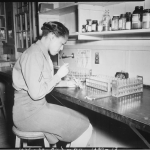
By Katie Acken Lowe Pipette (Noun or verb. /pie-PET/) What does it mean? A pipette is a mechanical instrument used to measure a precise volume of liquid. Once measured, the liquid is then transferred into a tube, beaker or other vessel. There are many different types of pipettes used for specific purposes, such as […]
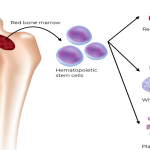
By Sara Lowe Hematopoiesis (Noun. /hee-ma-do-po-EE-sis/.) What does it mean? Hematopoiesis is the process in which a stem cell will develop into any type of new blood cell based on external factors that affect the organism. Stem cells that undergo hematopoiesis are called hematopoietic stem cells. An example that would initiate hematopoiesis would be if […]
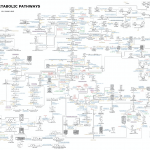
By Regina Fernandez Metabolism (Noun. /muh-TAB-uh-liz-uhm/) What does it mean? Metabolism refers to all the chemical reactions that produce or use energy and occur within living organisms. These processes include converting food into energy, using energy to build up substances, and removing waste products. For example, if you eat fruits, which contain carbohydrates, the cells […]
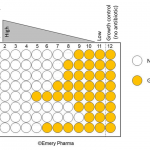
By Jenna Beam Technique Name: Minimum Inhibitory Concentration (MIC) tests. This article will focus on broth dilution tests, however other tests (like the E-test) are also used to determine the MIC. Fun Rating: Difficulty Rating: MIC tests are super quick and simple to set up and pretty easy to interpret, as well. We give this a […]

By Emma Goldberg Penguins are arguably some of the coolest animals on the planet, and not just because they live in freezing temperatures. Of the 18 different species of penguin around the world, only 6 reside in Antarctica. Some of these penguin species, like the Emperor, Adelie and Rockhoppers, were featured in Happy Feet. And […]
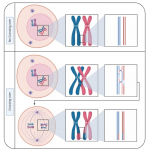
By Mohamed Nasr Chromosomal Crossover (noun. /kro-mo-SO-muhl KROSS-over/) What does it mean? Chromosomal crossover, also known as “crossing over”, is the process of chromosomes aligning and exchanging portions of their genetic material. The areas in the chromosome that cross over are called chiasmata. This crossover occurs during gamete formation in the prophase of meiosis I. […]
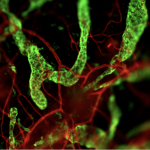
By Natalie Nielsen Technique Name: Immunofluorescence Fun Rating: What is the general purpose? To visually label and detect proteins on and in cells. Why do we use it? Medical diagnostics or scientific research. For example, it can aid in the diagnosis of breast cancer. How does it work? Have you ever wondered how scientists identify specific […]

By Gabrielle Quickstad Have you ever walked down the aisle of your local department store and taken a look at the labels on food containers or water bottles? Often, you’ll see a label proclaiming that the product is “BPA-free”. So what is BPA, and what does “BPA-free” really mean? BPA, or bisphenol A, is a […]
By Peter Buttery Have you ever wondered how one small pill can relieve a headache or cure a disease? The answer is not magic, its pharmaceutical chemistry! Most medicinal drugs contain chemical substances that cause your body to undergo a physiological change to fix or otherwise alleviate a problem in your body that was causing […]
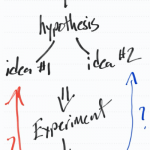
By Alan Curtis Hypothesis Plural: hypotheses (singular noun. /hi-POTH-eh-sis/) (plural noun. /hi-POTH-eh-seas/) What does it mean? A statement that is one possible way of explaining an observation with varying amounts of evidence. In science, hypotheses are important because they serve as a starting point for additional study.A hypothesis may be right or wrong but most importantly, […]
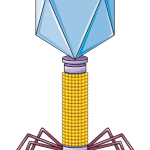
By Nicole Gadda Bacteriophage (Noun. /bak-TEE-ree-o-faj/) A bacteriophage is a virus that only infects bacteria. Like all viruses, they’re not living organisms and need a host to survive. Scientists estimate that there are over 1031 individual bacteriophages on Earth, meaning they outnumber all living organisms combined! How do I use it in a sentence: “Dr. […]

By Alec Chaves Technique Name: Radioactive Tracing in Metabolic Research Danger Rating: As the name suggests, this technique requires the scientist to handle radioactive materials such as tridium and 14-carbon, and if they do not wear protective equipment (gloves, eyewear, lab coat) and/or use unsafe lab practices, they could be accidentally exposed to the radiation which […]
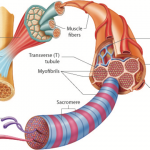
By Zoe Terwilliger Parenchyma (noun. /puh-RENK-uh-ma or /PAIR-en-kahym-a/) What does it mean? Organs can be made of several parts–some parts perform the primary function of the whole organ, while other parts are only supportive. The part of an organ that performs the primary function of that tissue is known as the parenchyma. Take a muscle […]
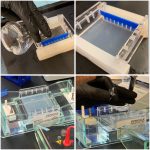
Welcome to our first installment of “Technique Tuesdays”! With these posts about methods and tools, we hope to give you a window into what day-to-day life is like working in science. ——————————————————————————————————————————- By Anna Wheless Technique Name: Gel Electrophoresis Fun Rating: What is the general purpose? Gel electrophoresis separates charged molecules based on their sizes. Why […]
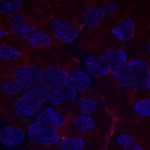
By Alec Chaves Hard work and discipline are important factors in determining success, no matter what the goal. This also holds true in sports this also holds true, although there are a host of other factors that can help increase one’s chances of becoming a successful athlete. As a scientist and a sports fan, I […]

By Rami Major Scientific researchers spend large portions of their days asking hard questions and searching for answers and it’s not uncommon for scientists to themselves conducting dozens or even hundreds of experiments to answer a single question! Research experiments can include observing the role of proteins on a biological process, investigating the effects of […]

By Devina Thiono Onions are some of the most useful and tasty ingredients a chef can use. When you cut into them, however, you may notice that your eyes start to burn and tear. It might even get so bad that you have to step away and ask someone else to finish the cutting! As annoying […]

By Whitney Bell Exploring Mars, aka the “Red Planet,” is an ambitious, long-term goal of the National Aeronautics and Space Administration (NASA). The average distance between Mars and Earth is around 140 million miles. Since each planet circles around the sun in a unique orbit, however, the Earth and Mars can be as get as […]
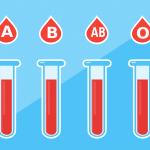
By Alan Curtis Blood type. Everybody has one. Do you know yours? We can turn to genetics to help us understand where our blood types come from. We can then use immunology to understand why blood types are important. Gregor Mendel, the father of modern genetics, got a lot of things right with his famous […]